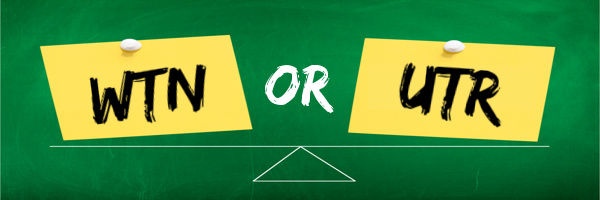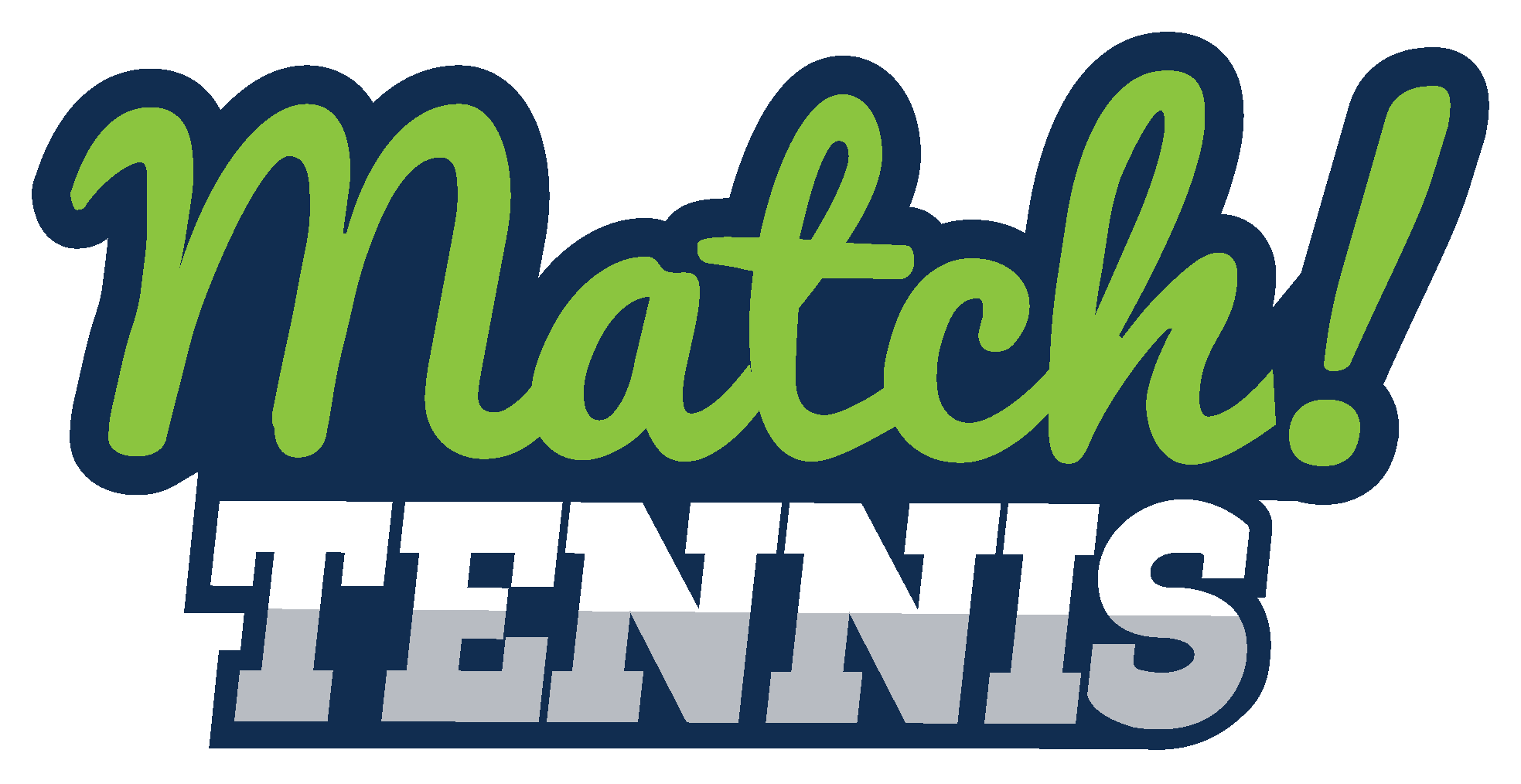
At Match Tennis App, we often get asked what the difference is between the UTR and WTN rating systems. Which ratings are more accurate? Which is better?
We are pleased to present a timely practitioner-academic research collaboration out of Duke University that provides an in-depth examination of the two most prevalent rating systems in tennis. This study offers clarity on the numerous questions concerning the differences between these systems. Below, you will find an enlightening conversation with the scholars behind this investigation, offering further insights into their ground-breaking work. We also have included a summary of the research and a link to the full research paper below the interview.
Interview
Match Tennis App: Today, we have with us Rebecca and Bill Mayew. Rebecca is a USPTA Professional who coaches and oversees the development of her two boys, one who just finished his junior career and is playing in college, and the other who is currently competing as a junior. Bill is a business school professor at Duke University. They have co-authored a new study that looks at how well UTR and WTN ratings work in junior tennis. Can you tell us what led you to undertake the study and what you found?
Rebecca Mayew: An important aspect of junior player development is getting a practice partner with the right skill level and entering tournaments that will provide the right level of competition. It’s quite common to use ratings like UTR or WTN for this purpose, and it’s very easy when something like the Match Tennis App puts ratings and rankings for tournament players right at your fingertips. With the recent launch of WTN in the United States, it is challenging to know which one you should use? Is one better than the other? We wanted to know the answer to that question.
Bill Mayew: I commonly do research on ratings in the context of business personnel, such as whether one financial analyst is better than another. So I looked in the academic literature on tennis to see if there were any papers on how good tennis ratings worked. WTN is too new to have academic studies, but I found nothing on UTR ratings either. There were papers on tennis in the academic literature, but the focus was on how well ATP and WTA rankings predict match outcomes in Grand Slams. Those findings at the pro level don’t help us understand junior tennis very well.
Rebecca Mayew: An additional difficulty for knowing which rating to use is that adoption of UTR and WTN varies a lot. The USTA has adopted WTN, but high school tennis in the United States uses UTR. The ITA just switched from UTR to WTN. So as organizations think about what rating they should use, we thought it would be important to formally study how well UTR and WTN ratings work as measures of player skill.
Match Tennis App: So, how do you go about studying this issue?
Bill Mayew: The standard analysis in the literature is to just take individual matches and measure the rating differences between players and see how well the rating difference predicts the match outcome. The idea is that if the ratings truly measure player skill, then the larger the difference in ratings, the more likely you should be able to predict the winner. The outcome of doing this sort of analysis is a number that ranges from 0.50 to 1.00, where 0.50 represents random chance, and 1.00 represents perfect predictive ability. If UTR and WTN ratings were completely useless, we would get values equal to 0.50, and if they predicted the match outcome perfectly every time it would be 1.00.
Match Tennis App: But you need matches to analyze, right? What matches did you study?
Rebecca Mayew: We studied all possible matches at the 2022 USTA National Championships, which totaled 1,532 matches for 870 unique players. This allowed us to cover both boys and girls in the 16u and 18u divisions. This set of players spans virtually the entire range of UTR and WTN values between novice and professional. Using a national tournament gives great coverage of the country, and the stakes are about as high as they get in junior tennis when the winner is getting a wildcard into the U.S. Open.
Match Tennis App: What did the results show?
Bill Mayew: As a caveat, let me first mention that our results are not yet published in a peer-reviewed journal, but the findings are undergoing scientific peer review right now. The data show that UTR and WTN values had a predictive accuracy of 0.739 and 0.704, respectively. These numbers are both better than random chance, suggesting both ratings are useful. These numbers are not what we call “statistically different,” meaning they are equivalent measures of player skill. That means one rating is not better than the other, at least for predicting which player will win the match. You might be thinking at face value that these numbers are a long way from the theoretically best predictive value of 1.00, but it turns out that is not the case. Other research studying professional matches using gambling odds reveals that UTR and WTN are as good at predicting match outcomes at the junior level as bookmakers are at the professional level. Bookmakers in the gambling market have incentives to develop the very best match outcome prediction possible. That we find both UTR and WTN, predict match outcomes at levels comparable to professional bookmakers is great news for junior tennis. It means either rating is a phenomenal measure of player skill.
Match Tennis App: What are the limitations of your study?
Rebecca Mayew: This is the first study of its kind, so redoing it over time and at different tournament levels will be important as the algorithms change and as different organizations decide where to send their match results. Both UTR and WTN need match inputs in order to generate ratings. This can lead to instances where a player may only have a UTR or WTN but not both. For example, if junior players who exclusively play high school tennis only have a UTR but want to play a USTA tournament, they may not have a WTN. We provide a formula to derive a missing WTN if you have a UTR and vice versa.
Bill Mayew: Another limitation is that we use match outcomes to infer how well UTR and WTN capture player skill. Our assumption that a higher-skilled player should win a match is not very controversial and is used in the academic literature, but there are many other ways to measure player skill, such as skill tests or simply from the perceptions of seasoned coaches who have seen hundreds of players. The benefit of our analysis is that it is very objective and easy to replicate, which should enable others to build on our work.
Match Tennis App: Anything else?
Rebecca Mayew: We hope the results are useful for everyone involved in junior tennis administration, from tennis organizations, junior coaches who develop players, tournament directors, and college coaches who recruit junior players. We appreciate the opportunity to share the findings with you.
Summary of Study
Assessing how good tennis players are is really important in tennis. In 2008, a rating system called the Universal Tennis Rating (UTR) was created. It’s a way to measure how good tennis players are around the world, no matter their gender, age, or where they live. Recently, another rating system called the World Tennis Number (WTN) was introduced by the International Tennis Federation (ITF).
Some researchers wanted to find out which rating system is better at predicting who will win when two players compete against each other. They studied 1,532 matches played by 870 players at a big tennis tournament called the United States Tennis Association (USTA) Junior National Championships in 2022.
They found that the UTR rating system predicted the match outcomes with 73.9% accuracy, while the WTN rating system had 70.4% accuracy. Both of these ratings were better than just guessing randomly, and they were similar to what professional tennis bookmakers use to predict match results.
They also discovered that the UTR and WTN ratings were very closely related to each other. The accuracy of predicting match outcomes didn’t change whether they used UTR or WTN ratings, no matter the player’s age, gender, the type of match they played, or how big the difference in ratings was between the players.
These findings are important for tennis organizations who want to decide which rating system to use, for tennis coaches who want to make sure players are matched fairly, for tournament organizers who want to rank players, and for college coaches who are looking for new players to join their teams.
The researchers also provided a way to convert ratings from UTR to WTN and vice versa, in case a player has one rating but not the other.
Conversion Formula Provided by Study
If you have a Universal Tennis Rating (UTR) and want to know what your equivalent International Tennis Federation World Tennis Number (WTN) would be, you can use a conversion formula. The formula is as follows:
WTN = 39.1836 – 2.3973 * UTR
This formula takes your UTR, multiplies it by 2.3973, and subtracts the result from 39.1836 to give you an equivalent WTN.
On the other hand, if you have a WTN and want to know what your equivalent UTR would be, you can use a different conversion formula. The formula is as follows:
UTR = 15.3567 – 0.3539 * WTN
This formula takes your WTN, multiplies it by 0.3539, and subtracts the result from 15.3567 to give you an equivalent UTR.
Please note that these formulas provide an estimation and the actual ratings might vary based on the player’s recent performance and other factors.
Click the button below to view the full research paper:
